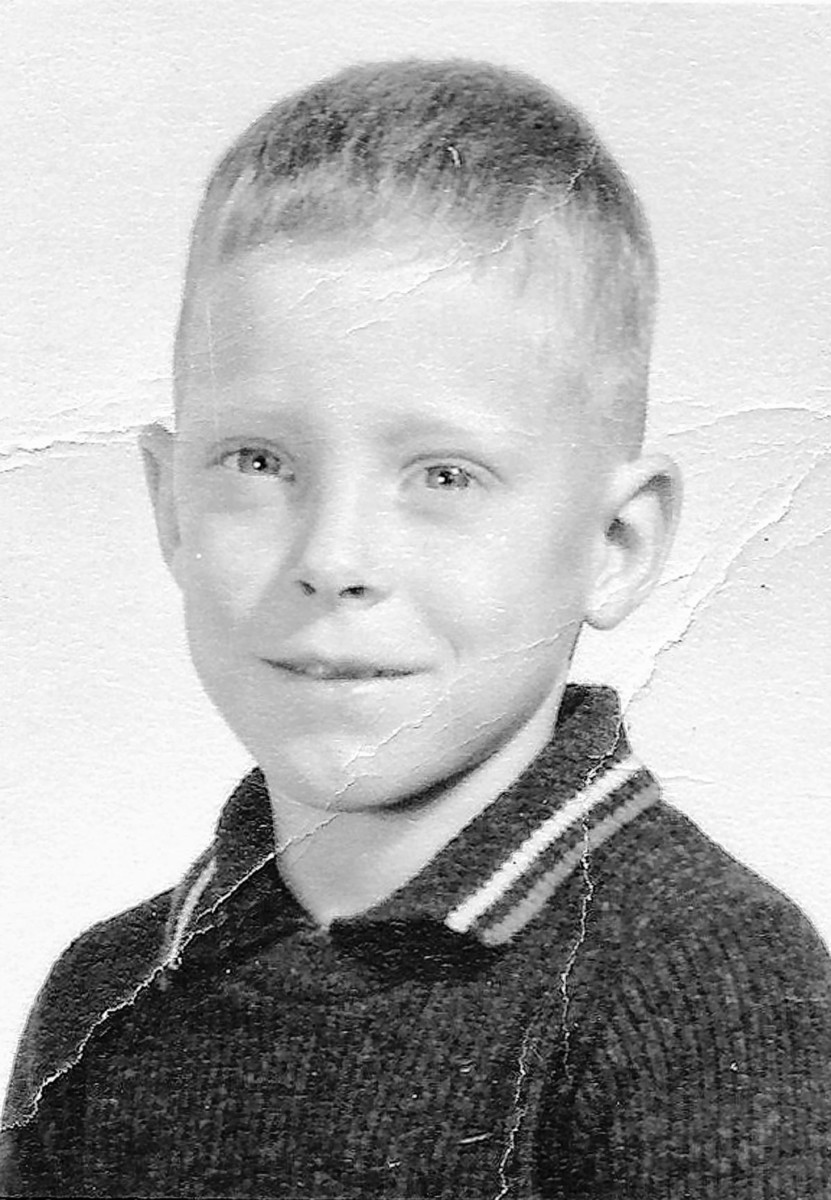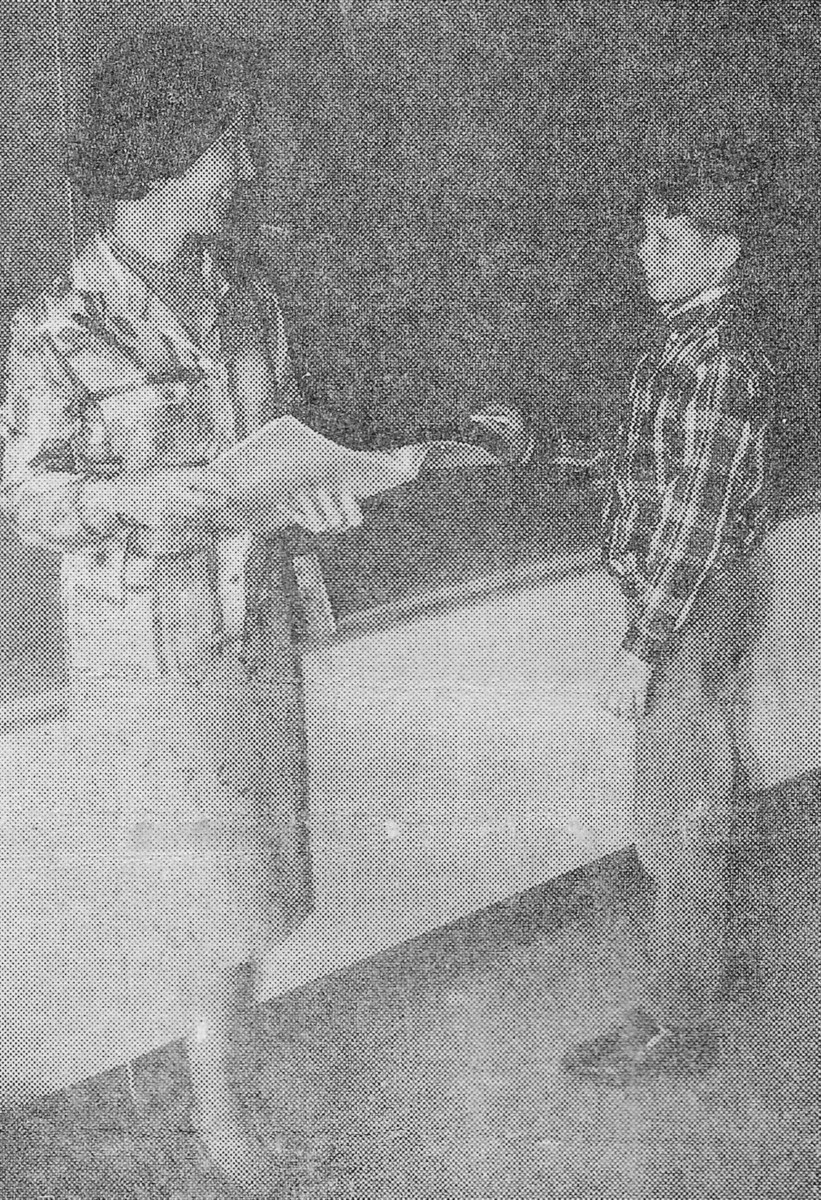
By Billie Stewart
As February approaches each year, Samuel Stewart recognizes the importance of National Heart Month.
This is the year he will celebrate the 60th anniversary of his first heart procedure. He also will celebrate the additional milestones he has observed in heart advancement and health care following that first surgery.
Sam is a 66-year-old man who has undergone multiple procedures for congenital heart defect. Born Oct. 2, 1954, he was first diagnosed in April 1956 with congenital aortic stenosis, a tissue growth below the aorta valve that prevented normal blood circulation.

Submitted photo
When Sammy, commonly referred to as a child, was 18 months old, his parents became concerned when they noticed the clubbing and numbness of his fingers and toes, labored breathing, heart pounding that sounded like a chugging engine and blue tint to his lips. Their family physician, Dr. Kenneth Bobb, quickly referred them to James Whitcomb Riley Hospital in Indianapolis.
Unfortunately, they could give little hope for Sammy leading a normal life. In fact, as he aged, his mortality rate elevated. Many trips for checkups were made by Sam and his parents to this facility. Each time, however, the answer was the same: No news that could be of help in the Seymour youngster’s situation.
In early 1961, the Indianapolis physicians were quick to say a breakthrough had been made in heart surgery, and it was time for Sammy to take advantage of it in order to be able to enjoy the normal activities of a healthy growing boy.
With hope in their hearts, the Stewarts made arrangements for their son to undergo open-heart surgery Feb. 23, 1961. Due to health complications, a common cold, his surgery was postponed until April 13.
Besides scheduling the long, tedious operation, it became necessary to find donors for 14 pints of B positive blood. Although this was not the rarest type of blood, it was not the most common.
It was here that the American Heart Association and the Jackson County chapter of the American Red Cross offered help. They found more than enough people willing to give their blood for the youngster’s cause. Seventeen volunteers drove to Indianapolis the day prior to Sammy’s surgery to give one pint each.
Sammy underwent the five-hour surgery performed by Dr. William Schumacher. Two weeks after the surgery, he was back at home with his five brothers and sisters. Four weeks later, he was able to run and play with the other children in the neighborhood.
Could it have been the clinically approved cardiopulmonary bypass pump that was the key element to the breakthrough in medicine? The CBP had been successfully tested on an 18-year-old woman in 1953 but was not deemed safe due to bacteria, clotting and erroneous gas exchanges. Therefore, the mortality rate remained high. It was not until 1960 that it was perfected enough to deem safe.
The Stewart family was grateful to the American Heart Association and American Red Cross for their contributions in helping with Sammy’s surgery and recovery efforts. They began to volunteer at the local chapter levels. Thomas and Mary Stewart served as presidents at the American Heart Association and became passionate about increasing local donations.
The entire Stewart clan was expected to help with the door-to-door solicitations and fundraising. Fundraising for the children meant gathering as many school and neighborhood friends to collect soda bottles from family and friends that valued a nickel each when redeemed at the local grocery store.
Tom would drive his pickup to help the children gather their bottles and deliver them to the store. Afterwards, he would reward all of those who helped for their due diligence with burgers and sodas.
As we all know. it takes a village to raise a child. That was evident when people willingly drove to Indianapolis to donate blood specifically for Sammy. It continued in the efforts of the adults and children who walked door to door soliciting funds for the American Heart Association and to those who were active in other fundraising activities that benefited the organization that benefited the local boy.
For several years after the initial surgery, Sammy was able to partake and enjoy the activities that most children take for granted; however, when he was 15, he began experiencing some noticeable differences in his energy level and heart arrhythmia.
During his routine follow-up, the doctors at Riley became concerned surgery would be inevitable. He was then referred to Mayo Clinic in Rochester, Minnesota, for consultation. It was determined after significant testing that surgery would again be required to repair the aortic valve. The tissue or rings had reappeared and thickened, causing blood flow restrictions.
The surgery was scheduled for Aug. 10, 1970, prior to his sophomore year of high school.
Although the surgery was successful, it did not come without complications. Here are the notes of Dr. Wallace, the surgical doctor:
“A second median sternotomy was used. There were dense adhesions completely obliterating the pericardial space. It appeared that pericardium had not been closed previously. In attempting to free the heart enough to insert the sternal retractor, a tear was made at the junction of the right atrium with the right ventricle, and this was controlled with great difficulty. After a period of hypotension despite transfusions, we were finally able to free the heart enough to get the sternal retractor into it, and freeing of the right atrium was a great difficulty. We encountered a significant amount of bleeding, and it was therefore necessary to go on bypass using the right common femoral artery for arterial cannulation. The right atrial catheter was inserted through the tear in the right atrium and a purse-string was placed about it. I was somewhat concerned if in repair of the defect damage had occurred to the right coronary artery. Perfusion was maintained at 2.0 liters per minute per square meter at 32 degrees Centigrade for 29 minutes. The aorta was cross-clamped for 12 minutes. An oblique aortotomy incision was made. It appeared that the area of stenosis was due to subvalvular ridge on the anterior leaflet of the mitral valve and extending around into the septum. There was also very slight fusion between the left and right coronary cusps. With the heart relaxed, there did not appear to be significant obstruction due to hypertrophy of the septum. The ridge of tissue producing the subvalvular stenosis was excised. The commissure between the left and right coronary cusps was opened 2mm and a myotomy performed. This appeared to completely relieve the obstruction. The valve appeared to be reasonably competent, although certainly was not a normal valve. There was some thickening of the valve leaflets. I debated at one point whether we should consider replacing the valve; however, I felt under the circumstances, it would be best not to replace the valve. At some time in the future, this patient will probably need replacement of the aortic valve. The aortotomy incision was closed with continuous No. 0000 silk, filling the left heart and aorta before completing the closure. A thumb tack vent was inserted into the ascending aorta as the aortic cross-clamp was released. Bypass was gradually discontinued and hemodynamics was satisfactory. Pressures were measured. Pressure in the left ventricle was 95, while that in the aorta was 100mm of mercury. Decannulation was effected, the atrium closed and the common femoral artery repaired with fine silk. Right at the point when the skin was being closed, the patient suddenly and unexpectedly developed ventricular fibrillation. The chest was promptly reopened, the heart massaged and then defibrillated with one shock. Following this, hemodynamics was quite satisfactory, and the chest was closed as previously described. The groin was closed with catgut and silk.”
Dr. Wallace’s intuition into the damage done to the right coronary artery would reveal later that his right coronary was revealed irrelevant. The significant scarring and damage to the pericardium would also become relevant as Sam began to age.
Although there are no records as to the cost of Sammy’s first surgery compared to the second, it is know that his parents opted for a private room located within Riley’s ICU burn unit at a cost of $15 per day.
It is easy to calculate that his hospital charges for two weeks at that rate would have been approximately $210 in 1961. Retained records of his Mayo surgery and hospital records indicate that his surgery in 1970 with a hospital stay of 10 days at St. Elizabeth’s was barely $4,500.
Sam was able to recover and live a normal life for many years to come. He finished high school, completed college, returned to work in the family business, married and became a father to three. He and his brother, Tom, would later acquire Stewart’s LP Gas from their father.
Billie Stewart is a Seymour resident. Her husband, Sam Stewart, is a 66-year-old man who has undergone multiple heart surgeries. In honor of National Heart Month, she is sharing his story. This is the first of a three-part series. Send comments to [email protected].
